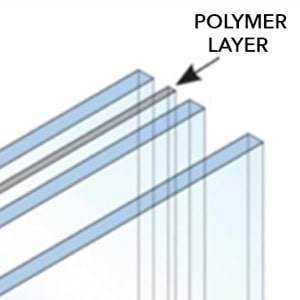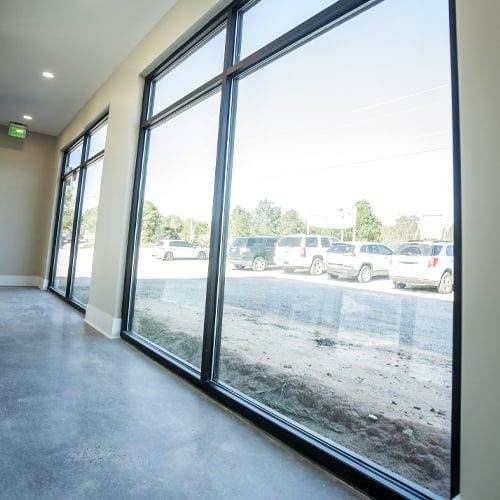Glass is an important feature in our lives, providing us with natural light and clear views of the world outside. However, when it comes to protecting our homes from extreme weather and potential break-ins, not all glass is created equal. In this article, we explore the difference between hurricane glass and impact glass, two commonly used types of glass that offer varying levels of strength and resistance. By understanding their unique qualities, we can make informed decisions about which type of glass is best suited for our specific needs and circumstances.

This image is property of images.contentstack.io.
Definition of Hurricane Glass
hurricane glass, also known as hurricane-resistant glass or hurricane-proof glass, is a type of safety glass designed to withstand the high winds, flying debris, and extreme conditions associated with hurricanes and other severe storms. It provides an added layer of protection for buildings and structures in areas prone to tropical storms and hurricanes.
History
The history of hurricane glass dates back to the early 20th century when high-impact winds and hurricanes began to pose significant threats to coastal regions. The need for a durable and resilient glass solution led to the development of hurricane glass. Over the years, advancements in materials and manufacturing processes have further enhanced the strength and effectiveness of hurricane glass.
Purpose of Hurricane Glass
The primary purpose of hurricane glass is to safeguard structures and their occupants during violent storms. It acts as a protective barrier, preventing the entry of wind, rain, and airborne debris into a building. By withstanding the impact of flying projectiles and maintaining the structural integrity of windows and doors, hurricane glass helps to minimize property damage and protect lives.
Definition of Impact Glass
Impact glass, also referred to as impact-resistant or shatterproof glass, is a type of safety glass designed to withstand the impact of objects, such as rocks, golf balls, or even hammers. It is commonly used in areas where the risk of breakage and potential harm from flying debris is a concern.
History
The history of impact glass can be traced back to the mid-20th century when safety glass became increasingly necessary in areas prone to accidents and break-ins. Impact glass was initially developed to provide protection against break-ins and burglaries. However, its application was later expanded to include protection against hurricanes and severe storms.
Purpose of Impact Glass
The main purpose of impact glass is to enhance the security and safety of properties. It acts as a deterrent to burglars and intruders by resisting breakage and preventing unauthorized access. Additionally, impact glass provides protection against the impact of flying debris during severe weather events, making it a crucial element in storm-resistant construction.
Composition
Hurricane Glass Composition
Hurricane glass is typically composed of multiple layers of glass laminated together with a strong interlayer, usually made of polyvinyl butyral (PVB) or ethylene-vinyl acetate (EVA). This lamination process creates a sandwich-like structure that offers increased resistance to shattering. Additionally, the interlayer provides added strength and flexibility, allowing the glass to remain intact even after impact.
Impact Glass Composition
Impact glass is also constructed using a similar lamination process. It consists of two or more layers of glass bonded together by a special interlayer, often composed of either PVB or a thermoplastic material such as polyurethane. The interlayer absorbs and distributes the force of impact, preventing the glass from breaking into sharp shards.
Strength
Hurricane Glass Strength
Hurricane glass is known for its exceptional strength and durability. The laminated construction and the use of resilient interlayers enhance its ability to withstand high winds and impact forces. This type of glass has been tested and certified to meet specific performance standards, ensuring its resistance to hurricane-force winds and the impact of debris.
Impact Glass Strength
Similar to hurricane glass, impact glass exhibits high strength and resistance to breakage. The lamination process and the interlayer significantly enhance its impact-resistant properties. Impact glass is rigorously tested to withstand the impact of varying objects, such as large rocks or baseballs, at high velocities without shattering or compromising its integrity.

This image is property of cgiwindows.com.
Resistance to Forces
Hurricane Glass Resistance
Hurricane glass is designed to resist the powerful forces exerted by hurricanes and severe storms. It provides a protective barrier that can withstand wind speeds of up to 200 miles per hour or more. Additionally, it offers resistance to the impact of debris propelled by these extreme winds, reducing the risk of glass breakage and breaching of the structure.
Impact Glass Resistance
Impact glass is engineered to resist various forces, including high-velocity impacts and attempted break-ins. It can withstand the force of objects striking the glass at substantial speeds without shattering or compromising the security of the building. This resistance to external forces ensures the safety of occupants and protects against potential property damage.
Cost
Hurricane Glass Cost
The cost of hurricane glass can vary depending on factors such as the size of the window or door opening, the desired thickness of the glass, and the specific manufacturer or supplier. Generally, hurricane glass is more expensive than conventional glass due to its specialized construction and enhanced performance characteristics. However, the long-term benefits and added protection it provides often outweigh the initial investment.
Impact Glass Cost
Similar to hurricane glass, the cost of impact glass can vary depending on various factors such as size, thickness, and supplier. Impact glass typically falls within a similar price range as hurricane glass, considering that they share similar manufacturing processes and performance qualities. The cost of impact glass should be viewed as an investment in security and safety.

This image is property of info.alcoimpact.com.
Installation
Hurricane Glass Installation
Installing hurricane glass typically requires professional expertise due to the specialized techniques and equipment involved. It is essential to ensure proper fit and secure installation to maximize its effectiveness. The installation process usually involves removing the existing glass, preparing the frame for the hurricane glass, and securely fastening the glass panels. Professional installers are trained to ensure precise and reliable installation.
Impact Glass Installation
The installation of impact glass follows a similar process to that of hurricane glass. It involves removing the existing window or door glass and replacing it with the impact-resistant glass panels. The installation must be carried out with precision and attention to detail to ensure a proper fit and optimal performance. Professional installers are familiar with the specific requirements of impact glass installation.
Maintenance
Hurricane Glass Maintenance
Maintaining hurricane glass is relatively straightforward. Regular cleaning with mild soap and water, along with a soft cloth or sponge, is usually sufficient to keep the glass panels clean and clear. It is important to avoid using abrasive or harsh chemicals that can damage the glass or its protective coating. Routine inspections should also be conducted to check for any signs of damage or deterioration.
Impact Glass Maintenance
Similarly, maintaining impact glass requires regular cleaning with mild soap and water. Soft cloth or non-abrasive sponges should be used to avoid scratching the surface or damaging the impact-resistant interlayer. It is advisable to inspect the glass periodically for any signs of wear and tear, such as cracks, chips, or delamination. Prompt repairs or replacements should be carried out to ensure the continued effectiveness of the impact glass.

This image is property of images.contentstack.io.
Energy Efficiency
Hurricane Glass Energy Efficiency
In addition to its protective qualities, hurricane glass can contribute to improved energy efficiency in buildings. The multiple layers of glass and interlayer act as insulation, reducing heat transfer between the interior and exterior of a structure. This increased thermal efficiency can lead to energy savings by minimizing the need for heating or cooling and creating a more comfortable indoor environment.
Impact Glass Energy Efficiency
Impact glass also offers energy-saving benefits similar to hurricane glass. The layered construction with advanced interlayers helps to reduce heat transfer, keeping interiors cooler in hot weather and warmer in cold weather. By maintaining more consistent indoor temperatures, impact glass can reduce reliance on heating or cooling systems, resulting in lower energy consumption and reduced utility costs.
Aesthetics
Hurricane Glass Aesthetics
Hurricane glass is available in various styles, designs, and finishes, allowing for customization to match the architectural aesthetics of a building. It can be integrated seamlessly into different window and door designs, offering versatility in both residential and commercial applications. Additionally, hurricane glass provides clarity and visibility, allowing natural light to enter while maintaining the desired level of security and storm protection.
Impact Glass Aesthetics
Similar to hurricane glass, impact glass offers a range of aesthetics to suit diverse architectural styles. It can be tailored to match the existing window or door frames, creating a cohesive and visually appealing appearance. Impact glass also allows for abundant natural light and clear views, without compromising security or storm resistance. The availability of different tints and finishes further adds to its aesthetic versatility.
In conclusion, both hurricane glass and impact glass serve essential purposes in protecting structures and their occupants. While hurricane glass primarily focuses on withstanding severe weather conditions, impact glass provides security and protection against break-ins and potential impact forces. Their compositions, strengths, resistance to forces, and costs may vary, but both types of glass offer reliable performance and contribute to improved energy efficiency. Professional installation, regular maintenance, and the availability of customizable aesthetics ensure that these safety glass options meet the diverse needs of modern construction and offer peace of mind in the face of natural disasters and security concerns.

This image is property of centuryglasssc.com.
